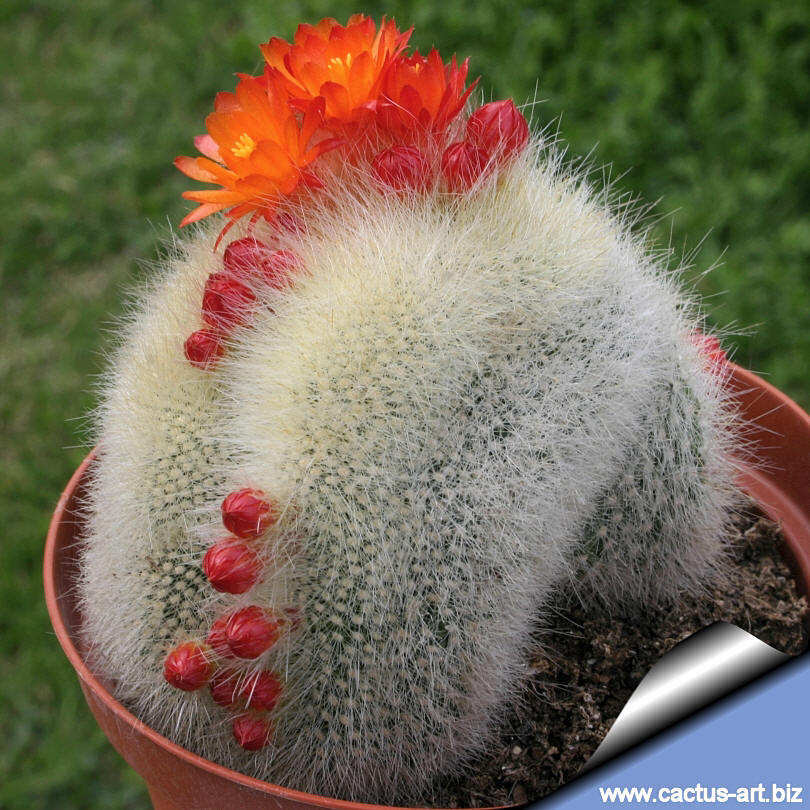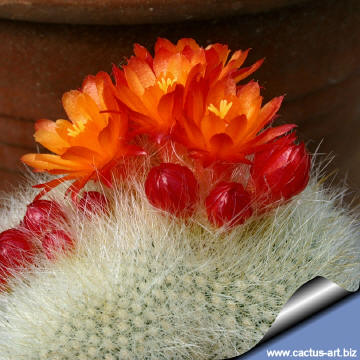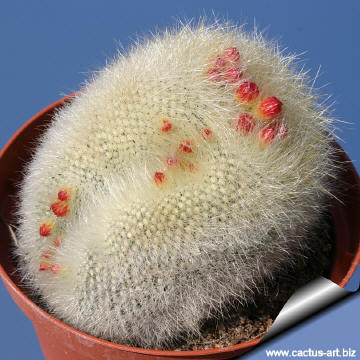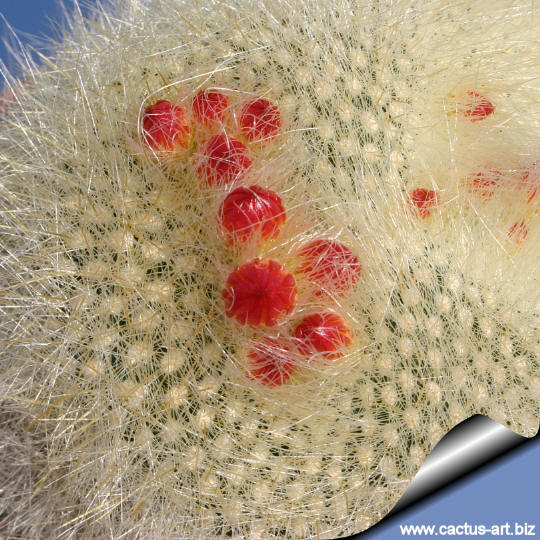|
|
|

Notocactus haselbergii:
the
nice and rare
crested form .
It is a very popular cactus with silvery white spines. It is a
heavy bloomer that can sport showy deep orange flowers for a long period
of time.
|
|
Description: Solitary, fast growing,
little cactus.
Stem: ±
Spherical flattened, bright
green, almost completely concealed by dense spines, up to 10 cm tall, 15
cm in diameter. The crown of the plant is usually set at an angle to
prevent water-sitting.
Ribs: About 30, low.
Areoles: With a short white
wool, they are arranged geometrically.
Spines: Silvery white, eventually with a yellowish tip, soft,
bristly.
Flowers: Bright orange to brick-red up to 2 cm wide and each can
last one to three weeks.
Blooming season: It flowers at the end of the winter or in early
spring for a long period of time ( It can last blooming to two months!).
Will start flowering around 5 cm in diameter. |
 |
 |
|
This is a very distinctive
plant even without flowers.
|
|
Propagation:
This plant can be propagated only
vegetatively by
grafting or
cuttings.
|
|


Advertising
|
|
|
|
|
Family:
Cactaceae (Cactus
Family) Notocactus
haselbergii (F.Haage ex Rümpler) A. Berger 1929
Accepted
Scientific Name:
Parodia haselbergii (F.
Haage ex Rümpler) F. H. Brandt 1982
forma cristata
Origin:
Garden origin (Nursery
produced cultivar). The standard species comes from
Rio Grande do Sul, Brazil.
Common English Names include:
'Crested Scarlet Ball'
Conservation status:
Listed
in
CITES Appendix II
Synonyms:
- Echinocactus haselbergii
F. Haage ex Rümpler 1885
- Malacocarpus haselbergii
(F. Haage ex Rümpler) Britton & Rose 1922
- Brasilicactus haselbergii
(F.Haage ex Rümpler) Backeberg ex Schoff 1942
- Echinocactus elachisanthus
F. A. C. Weber 1904
- Notocactus elachisanthus
(F. A. C. Weber) Herter 1942
- Brasilicactus elachisanthus
(F. A. C. Weber) Backeberg 1959
- Parodia elachisantha (F.
A. C. Weber) F. H. Brandt 1982
Etymology:
Named after the collector Dr. F. von Haselberg.
|
|
|
|

Cultivation: It is easy to grow. It
prefers a neutral to slightly acidic
mineral-based potting mix with a good
drainage.
It likes a warm bright location, does great in partial shade but
doesn't like full, hot blazing sun in the central summer month. Can
support quite some water during the growing season
but pot plants in winter are
wet-sensitive and needs
to be kept
dry (rots easily if soil is wet and cold) tends to lose its
roots in winter. Usually it is recommended to
over-winter
this plant in a bright and warm greenhouse with at least 8-10° C , but
it has proved to tolerate temperatures as low as -5° C for short
periods. It is susceptible to
spider mites, so it should be check once in a while for it.
|
|
Photo of conspecific taxa,
varieties, forms and cultivars of plants belonging to
the Notocactus scopa
complex:
|
|